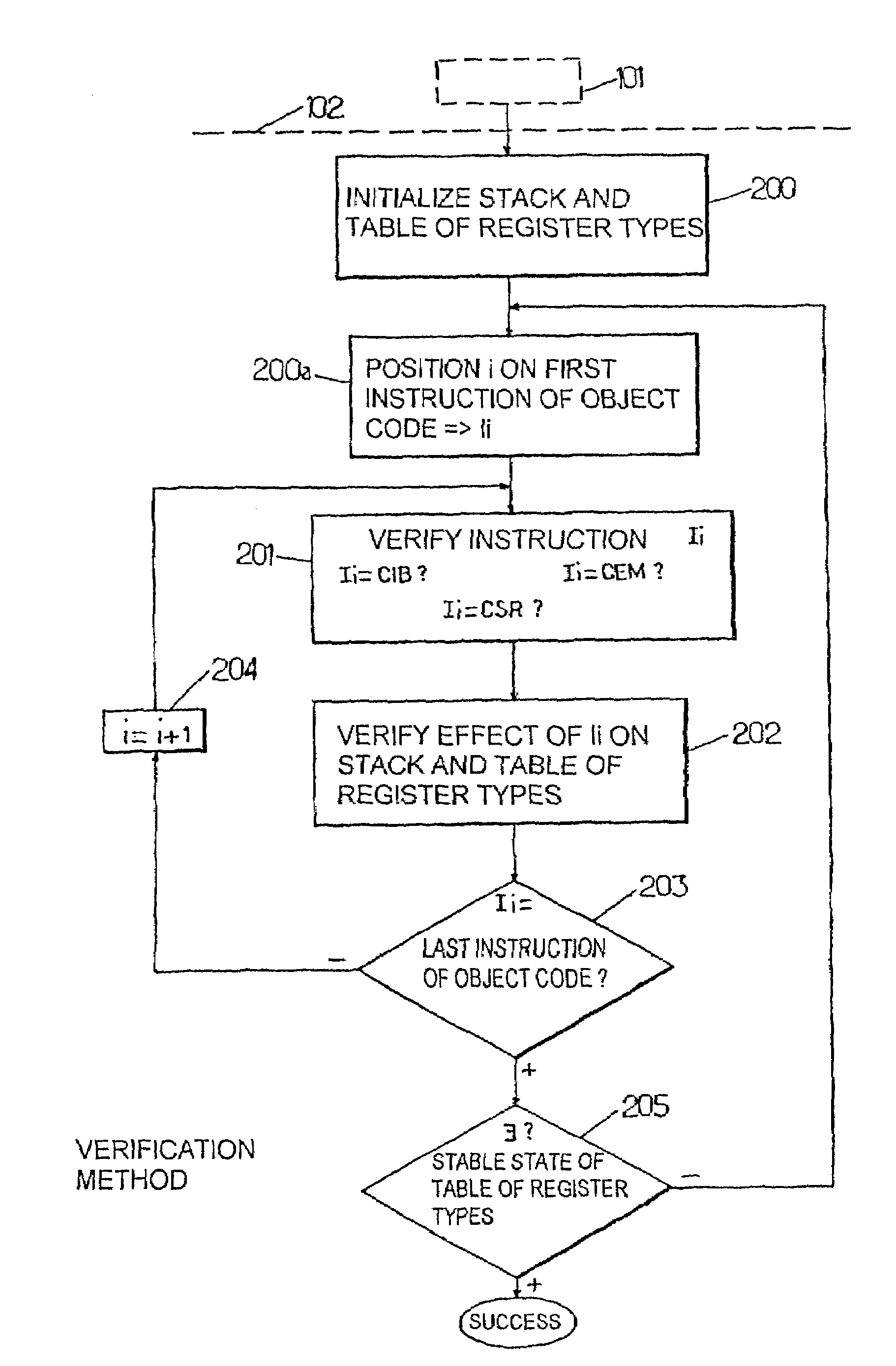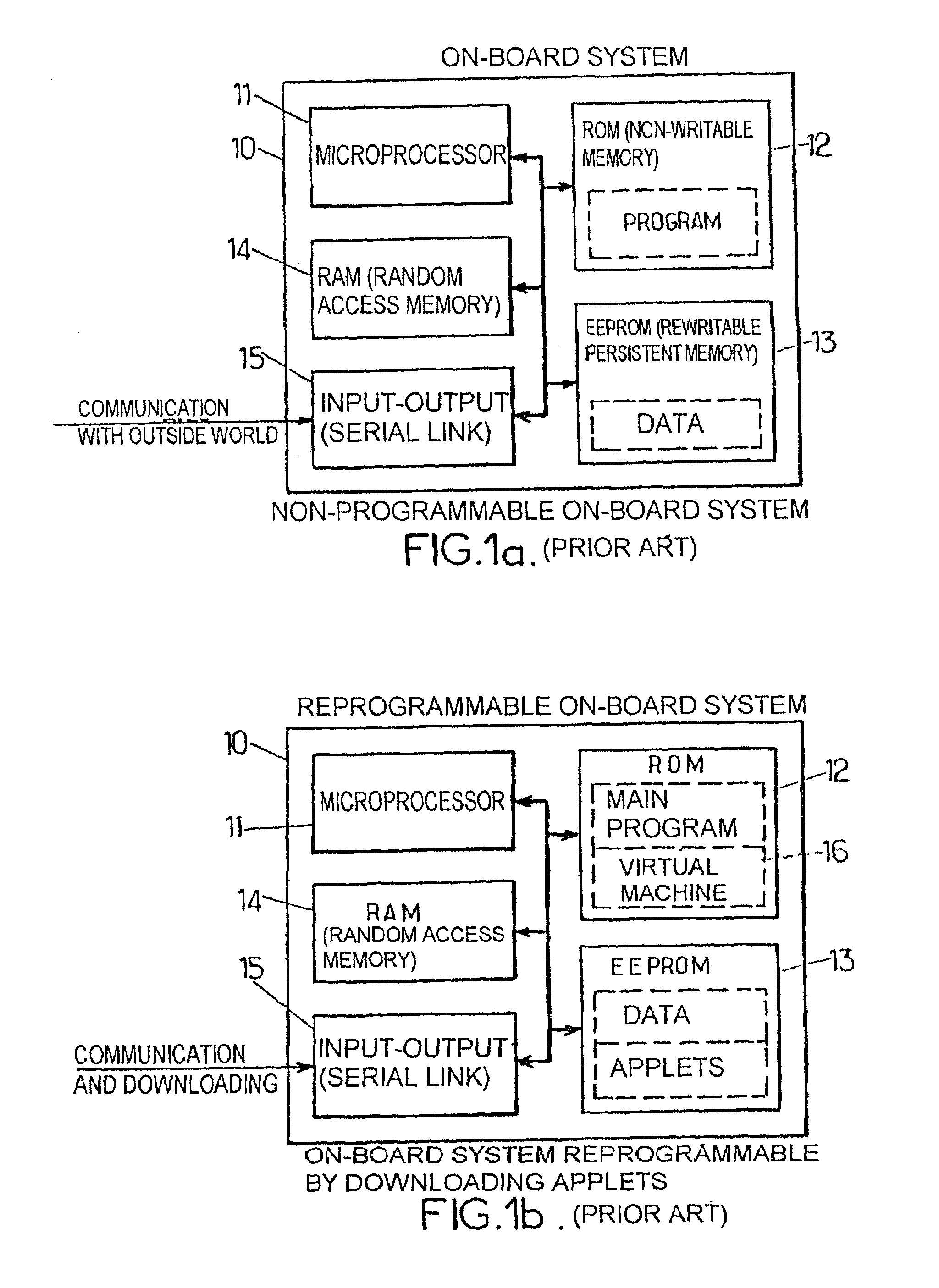Method for transforming and verifying downloaded program fragments with data type restrictions and corresponding system
a technology of program fragments and data types, applied in the direction of program control, program code transformation, interprogram communication, etc., can solve the problems of service security problems, unusable or harmful, and inability to execute unsigned and dangerous applets on the card
- Summary
- Abstract
- Description
- Claims
- Application Information
AI Technical Summary
Benefits of technology
Problems solved by technology
Method used
Image
Examples
first embodiment
[0171]the code transformation method which is the subject of the present invention will now be described with reference to FIG. 4a. In the embodiment shown in FIG. 4a, the initial conventional code is considered to satisfy criteria C1+C2+C′3, and the standardized code obtained as the result of the transformation is considered to satisfy criteria C1+C2+C3.
[0172]According to the abovementioned figure, the transformation method consists, for each current instruction Ii of the code or of the subroutine, in annotating each instruction, in a step 500, with the data type of the stack before and after execution of this instruction. The annotation data is marked AIi and is associated by the relation in the relevant current instruction. The annotation data is calculated by means of an analysis of the data stream relating to this instruction. The data types before and after execution of the instruction are marked tbei and taei respectively. Calculation of annotation data by analysis of the dat...
second embodiment
[0180]the transformation method which is the subject of the present invention will now be described with reference to FIG. 4b in the case in which the initial conventional object code satisfies criteria C1+C'4 and the standardized object code satisfies criteria C1+C4.
[0181]With reference to the abovementioned FIG. 4b, it is indicated that the method, in this embodiment, consists in annotating, according to a step 500 which is approximately the same as that shown in FIG. 4a, each current instruction Ii with the data type of the registers before and after execution of this instruction. In the same way, the annotation data AIi is calculated by means of an analysis of the data stream relating to this instruction.
[0182]The annotation step 500 is then followed by a step consisting in carrying out a reallocation of the registers, the step marked 601, by detecting the original registers employed with different types, and dividing these original registers into separate standardized registers...
PUM
 Login to View More
Login to View More Abstract
Description
Claims
Application Information
 Login to View More
Login to View More - R&D
- Intellectual Property
- Life Sciences
- Materials
- Tech Scout
- Unparalleled Data Quality
- Higher Quality Content
- 60% Fewer Hallucinations
Browse by: Latest US Patents, China's latest patents, Technical Efficacy Thesaurus, Application Domain, Technology Topic, Popular Technical Reports.
© 2025 PatSnap. All rights reserved.Legal|Privacy policy|Modern Slavery Act Transparency Statement|Sitemap|About US| Contact US: help@patsnap.com



